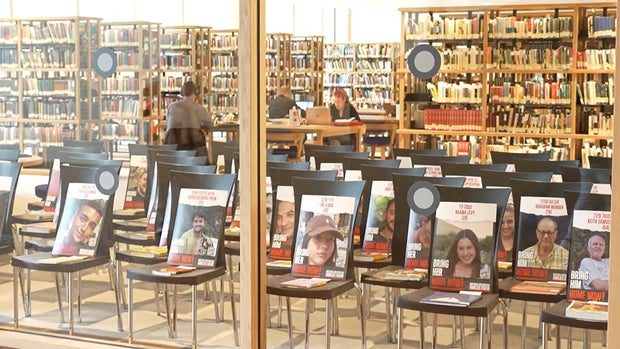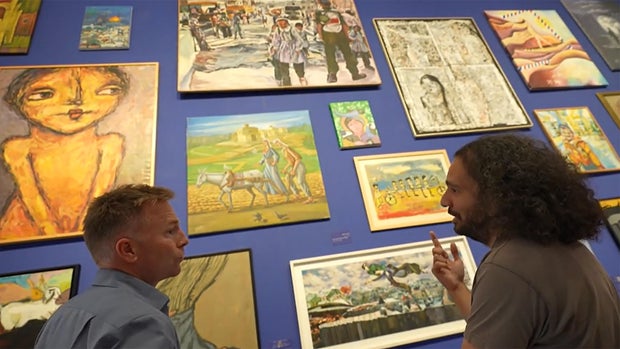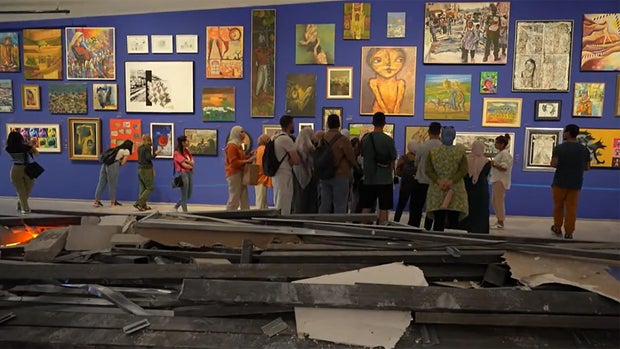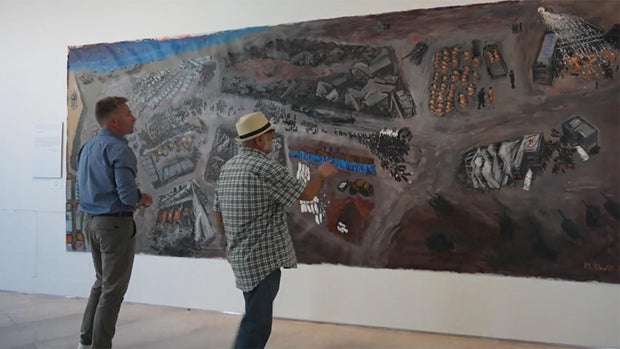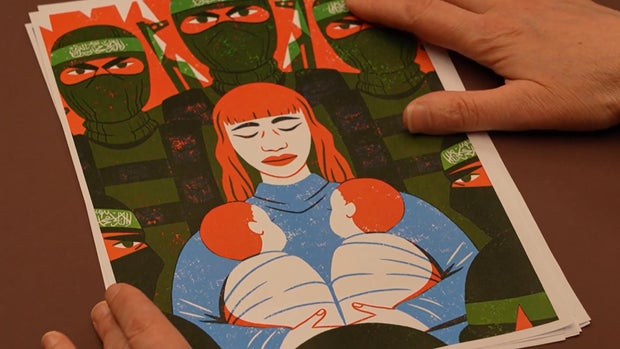CBS News
Can Trump still vote after being convicted?
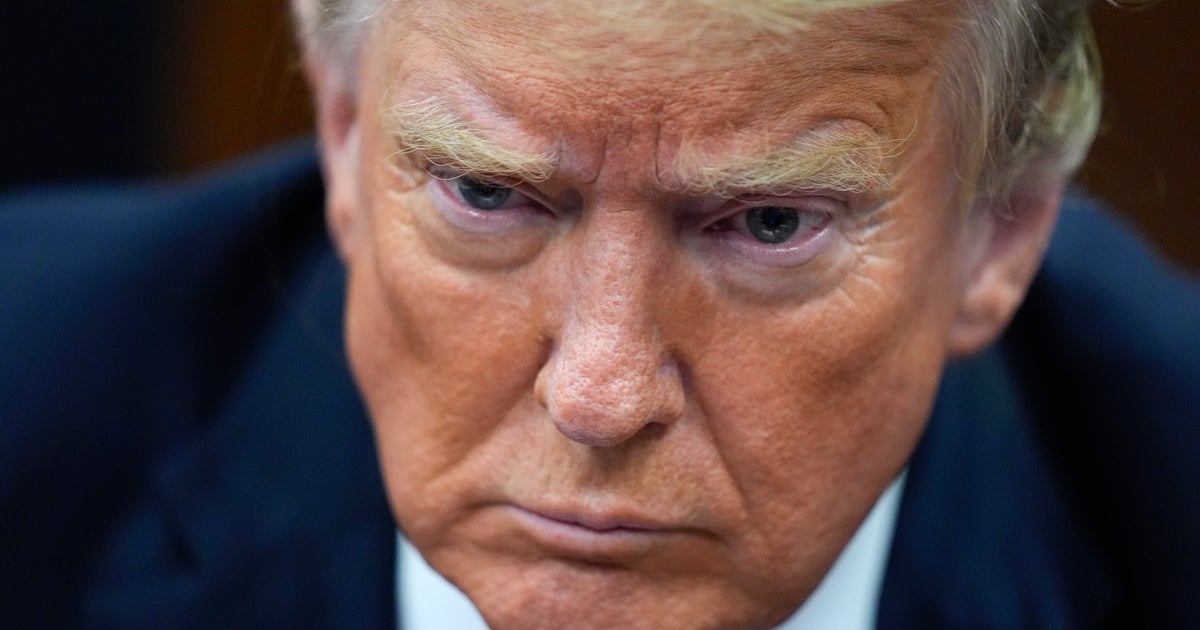
Former president and presumptive Republican nominee for president Donald Trump is now a convicted felon, but it’s still likely he can vote — and vote for himself — in Florida this fall.
Trump, whose primary residence was in New York for most of his life, moved his residency to Florida in 2019, so that’s where he would seek to vote this fall. Trump can still become president as a convicted felon, and experts say despite his conviction on 34 felony counts on Thursday, he can likely vote, too. Trump’s sentencing hearing is scheduled for July, but his attorneys are sure to file all appeals possible, and it’s not yet clear whether he will serve prison time.
Blair Bowie, an attorney at the Campaign Legal Center, said Florida “defers to other state laws when it comes to disenfranchising voters who are tried and convicted elsewhere.”
According to Florida state law, a Florida resident with a felony conviction elsewhere is only ineligible to vote “if the conviction would make the person ineligible to vote in the state where the person was convicted,” the Florida Division of Elections website says. According to the New York courts website, “you lose your right to vote while you are in prison for a felony conviction.” But “if you are convicted of a felony and you are released from prison, you can vote,” and “if you are convicted of a felony and your sentence is suspended, you can vote.”
The ACLU of New York says convicted felons who are on parole, on probation, were not sentenced to prison or completed a prison sentence can vote.
“New York only disenfranchises people while serving a prison sentence, so assuming Trump is not sentenced to prison time, his rights would be restored by New York law and therefore also in Florida,” Bowie said.
CBS News legal analyst and Loyola University Law School professor Jessica Levinson agreed, saying a person convicted of a felony can vote unless incarcerated.
“New York says you can vote unless he’s incarcerated, so no incarceration means he can vote,” Levinson said.
CBS News
12- and 13-year-olds arrested in attack on former N.Y. Gov. David Paterson, stepson

NEW YORK — Two youths have been arrested in connection to Friday night’s attack on former New York Gov. David Paterson and his stepson Anthony Sliwa.
The New York City Police Department says a 12-year-old boy and a 13-year-old boy were arrested Saturday and charged with gang assault. Their names are not being released.
Police initially reported they were searching for five individuals in connection with the attack, and they may still be looking for more suspects.
David Paterson, stepson Anthony Sliwa attacked on New York City’s Upper East Side
According to police, Paterson, 70, and his 20-year-old stepson were victims of a gang assault along Second Avenue on Manhattan’s Upper East Side.
Paterson said it started when he and his stepson were walking their dog and saw three people climbing up a fire escape. Paterson said his stepson threatened to call the police and got into a brief argument with the individuals before they returned home.
About 45 minutes later, the two went back outside, and Paterson says the crowd grew, possibly recognizing his stepson from the first encounter, and became violent. Paterson said he was punched in the face and the shoulder, and his stepson was knocked to the ground.
Saturday, both Paterson and Sliwa’s father, Guardian Angels founder and former mayoral candidate Curtis Sliwa, spoke out.
“When they were insulting him and starting to fight him, he didn’t back down. And I think that took a lot of courage, a lot of bravery,” Paterson said.
“He did the right thing. And then when they attacked him, he did the right thing to protect David Paterson,” Curtis Sliwa said.
Paterson and his stepson were taken to a local hospital but have since been released as they continue to recover. Paterson said his stepson needed five stitches on his lower lip and suffered multiple bruises.
CBS News
Preserving stories of the Israel-Gaza conflict through art

Watch CBS News
Be the first to know
Get browser notifications for breaking news, live events, and exclusive reporting.
CBS News
Preserving the stories of the Israel-Gaza conflict through art

As head of collections at the National Library of Israel, Raquel Ukeles’ job took on a new focus, and an emotional turn, after Hamas’ massacre last year. “Our idea is to capture all the different angles and perspectives, both of what happened on that terrible day, October 7th, and during this period,” she said.
Among the millions of items being saved is artwork, including a spiral of text messages from the morning of the attack. Ukeles choked up reading it: “It’s very urgent: My children are alone in the house of Dvir. It’s tough to read.”
How does art fit in? “Art is a way that human beings try to make sense of reality,” Ukeles said.
CBS News
Other items being preserved: ribbons and memorabilia, posters, prayers and tributes. A T-shirt, a bumper sticker, coffee cups.
This growing collection, called “Bearing Witness,” is housed in the library’s striking new stone building in the heart of Jerusalem. An exhibition near the entrance marks October 7th. Librarians researched the 251 hostages, connecting each with a book. “The goal was to make us understand who these people are,” said Ukeles.
CBS News
Pointing to an image of a child taken hostage, Doane asked, “How is it to work here and to come and see this?”
Ukeles replied, “It breaks my heart, because I imagine this is my child.”
That pain is brutally clear in the roughly 500 oral testimonies that have been recorded so far. One, from Nehoray Levy, recalls fleeing the Nova Music Festival while being shot at on October 7th. “And I remember the moment I started to hear people screaming for their lives,” he said.
Ukeles said, “It’s a massive amount of material, the digital equivalent of 50 billion pages.”
Doane asked, “How do you know what to select and what not to select?”
“Our goal is to collect as much as possible,” said Ukeles, “because we don’t know what’s going to be significant 50, 100, 200 years from now.”
Ukeles said the library has a very large collection of GoPro videos that Hamas took on October 7th as they moved through and murdered people. She added, “We are capturing the history and the stories of what is happening in Gaza as well.”
Just about 20 miles from the library, in the occupied West Bank, across a physical separation barrier and a gaping cultural rift, is the Palestinian Museum. Here, in an impressive, contemporary structure set amid gardens not far from Ramallah, they are amassing a collection that marks the conflict from the Palestinian perspective.
CBS News
“We contacted our colleagues in Gaza, and we offered them this space,” said Amer Shomali, the museum’s director general. “I was assigned to the museum on October the 5th, and I entered my office on October the 8th.”
He sees this as a “museum on the front lines.” “We had big questions about what could be the role of a museum during a genocide,” Shomali said.
“You use a pretty loaded term, genocide,” said Doane.
“Yeah. They might not call it genocide for technicalities, but for us, this is how it feels,” Shomali said.
Pieces from Gazan artists fill the walls, around the debris from an earlier exhibition symbolizing the destruction in Gaza. Holes in the artwork from shrapnel, Shomali said, “became part of its history.”
CBS News
It was a challenge just amassing these works. Sometimes pieces were smuggled out, or painted outside of Gaza and not allowed in.
Doane asked, “In the middle of a war, aren’t there more important things to think about than art?”
“Yes, and no,” said Shomali. “Culture and art is centered in this conflict because it’s all about memory and imagination. Can we remember who we are and what Palestine looked like before? Can we imagine a better future other than the status quo we are facing and we are forced to live now?”
When one of the artists dies, they add a black ribbon to their name plate. So far, about five percent of the Gazan artists represented here have been killed.
In the next gallery, West Bank artist Mohamed Saleh Khalil told us he used to paint with bright colors; now he uses the “colors of conflict.”
CBS News
The role of an artist during war, he said, is “a humanist one. These works are a condemnation of the suffering.”
Shomali, the museum director, admitted to us he was reluctant to even appear in the same story as that library in Israel – a reflection of the deep divisions these artists depict in their work.
Doane asked, “Is there a recognition of October 7th here?”
“October 7th, or October 8th? It’s a complicated question,” Shomali said. “I don’t feel comfortable to talk about it, but in general I think to take that day out of the context is a bit tricky. … Things didn’t start in October the 7th, 2023. It started way back. And if we want to discuss October the 7th, we should discuss it within the overall context.”
We found unease on both sides, despite the massive effort to document, collect and chronicle.
CBS News
Doane asked Raquel Ukeles of the National Library in Jerusalem, “I wonder just on this, how much when you look at these images, you think about the other side, of Israeli soldiers and of civilians in Gaza?”
“I don’t make that connection, because I distinguish between Hamas unilaterally crossing that border and entering people’s homes and murdering the people in the homes,” she said. “What is happening now is a war that Israel didn’t start. I have to say, I’m uncomfortable with this whole line, because in the library, we try not to cross into talking about politics. And I feel like you’d ask me a political question.”
“Okay, but it’s a pretty political situation, don’t you think?” asked Doane.
“Right. No, no. But when I’m here, I’m here as the representative of the library and not Raquel Ukeles. And the library doesn’t have a position on what you just asked.”
Ukeles told us this is one of the “terrible human stories” that “must be told” as part of the 21st century. But for it to be told, understood and, ideally, learned from, these stories must first be preserved. “The library is a place to collect infinite stories,” she said. “And regardless of whether you and I get along, both of our work can sit comfortably on a shelf together. This is not binary. This is extraordinarily complicated. And each individual deserves to have their story told.”
For more info:
Story produced by Sari Aviv. Editor: George Pozderec.




